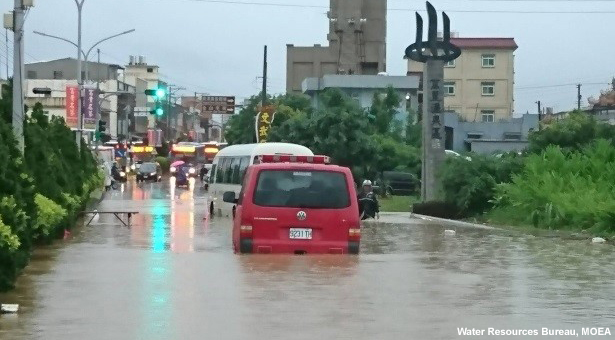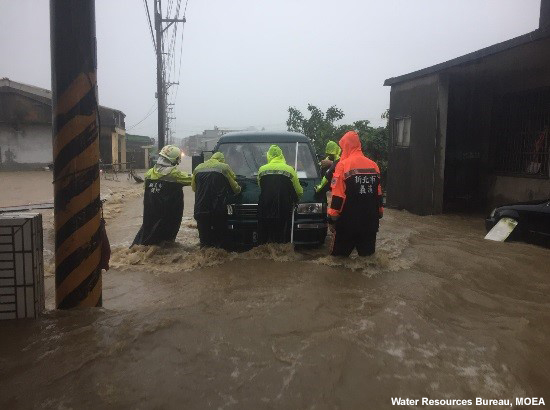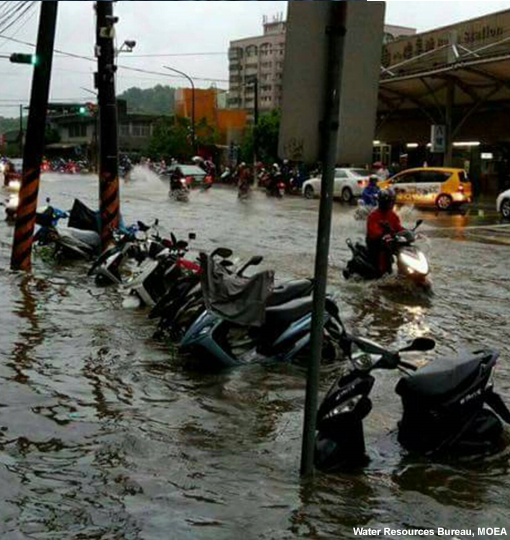Introduction
The Mei-Yu front develops between spring and summer when warm, humid air from the Southwest Monsoon meets the cool, dry air from the weakening Northeast Monsoon. Since neither of the two air masses is strong enough to replace the other, the boundary between them remains stationery and leads to continuous rainfall. This stationary boundary is called the Mei-Yu front. In Taiwan, the weather phenomena associated with the Mei-Yu front is known as the “Mei-Yu”, which means “plum rains” in Mandarin.

Flooding due to a Mei-Yu front event on June 1, 2017.

Flooding due to a Mei-Yu front event on June 1, 2017.

Flooding due to a Mei-Yu front event on June 1, 2017.
Heavy rainfall during the Mei-Yu season (May through June) can cause various disasters such as flash floods and landslides. In Taiwan, the heavy rainfall associated with the Mei-Yu front is the second leading weather disaster following typhoons. The “612 Floods” in 2005 is the costliest Mei-Yu disaster that led to 13 fatalities and more than NTD $2.1 billion in property damage. The “609 Floods” in 2006 resulted in more than 700 mm of rain in the mountainous areas of southwestern Taiwan, where the Alishan Station recorded 811.5 mm in one day!